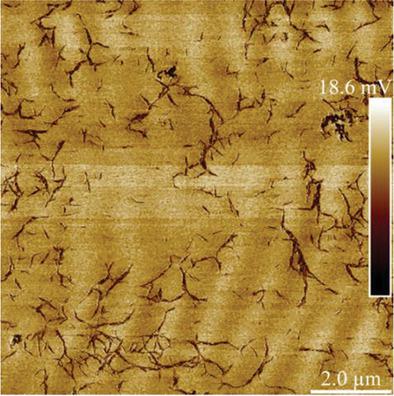当前位置:
X-MOL 学术
›
Macromol. React. Eng.
›
论文详情
Our official English website, www.x-mol.net, welcomes your
feedback! (Note: you will need to create a separate account there.)
Improving Latex-Based Pressure-Sensitive Adhesive Properties Using Carboxylated Cellulose Nanocrystals
Macromolecular Reaction Engineering ( IF 1.8 ) Pub Date : 2021-12-27 , DOI: 10.1002/mren.202100051 Vida A. Gabriel 1 , Mathieu N. Tousignant 1 , Sean M.W. Wilson 2 , Marie D.M. Faure 1 , Emily D. Cranston 3, 4 , Michael F. Cunningham 5 , Benoît H. Lessard 1 , Marc A. Dubé 1
Macromolecular Reaction Engineering ( IF 1.8 ) Pub Date : 2021-12-27 , DOI: 10.1002/mren.202100051 Vida A. Gabriel 1 , Mathieu N. Tousignant 1 , Sean M.W. Wilson 2 , Marie D.M. Faure 1 , Emily D. Cranston 3, 4 , Michael F. Cunningham 5 , Benoît H. Lessard 1 , Marc A. Dubé 1
Affiliation

|
Cellulose nanocrystals (CNCs) are becoming a popular option when producing polymer nanocomposites because they are a green alternative to petroleum-based performance enhancers and provide significant matrix reinforcement at low loadings. DextraCel is a commercial grade CNC with carboxylate surface groups that can be dispersed in water without sonication. These carboxylated CNCs (cCNCs) can be incorporated in situ via seeded semi-batch emulsion polymerization to produce latexes for adhesive applications. The resulting nanocomposite films exhibit 26x higher peel strength, 4.5x higher tack, and 7.7x higher shear strength relative to base case films. Curiously, adhesives produced from latexes containing cCNCs that do not undergo ultrasonication display greater adhesive property improvements relative to films produced with cCNCs that are ultrasonicated. Atomic force microscopy images reveal that cCNCs have stronger self interactions than their sulfated CNCs counterparts; cCNCs display side-by-side and end-to-end association in films when they are not ultrasonicated, which increases their “apparent” aspect ratio—an important characteristic attributed to matrix reinforcement. Omitting ultrasonication preserves cCNC-cCNC interactions that cause them to behave like nanofibers rather than discrete nanocrystals; this allows them to display greater mechanical enhancements, similar to reinforcements provided by nanofibrils, without the technical challenges associated with producing composite latexes with nanofibrils.
中文翻译:

使用羧化纤维素纳米晶体改善基于乳胶的压敏粘合剂性能
在生产聚合物纳米复合材料时,纤维素纳米晶体 (CNC) 正成为一种流行的选择,因为它们是石油基性能增强剂的绿色替代品,并在低负载下提供显着的基体增强。DextraCel 是一种商业级 CNC,具有羧酸盐表面基团,无需超声即可分散在水中。这些羧基化 CNCs (cCNCs) 可以通过种子半间歇乳液聚合原位掺入,以生产用于粘合剂应用的胶乳。所得纳米复合薄膜的剥离强度提高 26倍,粘性提高4.5倍,粘性提高 7.7倍相对于基础薄膜具有更高的剪切强度。奇怪的是,相对于用超声波处理的 cCNC 生产的薄膜,由未经超声波处理的含有 cCNC 的胶乳生产的粘合剂显示出更大的粘合性能改进。原子力显微镜图像显示,cCNCs 比其硫酸化 CNCs 对应物具有更强的自相互作用;cCNC 在未进行超声处理时会在薄膜中显示并排和端到端的关联,这会增加其“表观”纵横比——这是基质增强的重要特征。省略超声波处理保留了 cCNC-cCNC 相互作用,使它们表现得像纳米纤维而不是离散的纳米晶体;这使它们能够显示出更大的机械增强,类似于纳米纤维提供的增强,
更新日期:2021-12-27
中文翻译:

使用羧化纤维素纳米晶体改善基于乳胶的压敏粘合剂性能
在生产聚合物纳米复合材料时,纤维素纳米晶体 (CNC) 正成为一种流行的选择,因为它们是石油基性能增强剂的绿色替代品,并在低负载下提供显着的基体增强。DextraCel 是一种商业级 CNC,具有羧酸盐表面基团,无需超声即可分散在水中。这些羧基化 CNCs (cCNCs) 可以通过种子半间歇乳液聚合原位掺入,以生产用于粘合剂应用的胶乳。所得纳米复合薄膜的剥离强度提高 26倍,粘性提高4.5倍,粘性提高 7.7倍相对于基础薄膜具有更高的剪切强度。奇怪的是,相对于用超声波处理的 cCNC 生产的薄膜,由未经超声波处理的含有 cCNC 的胶乳生产的粘合剂显示出更大的粘合性能改进。原子力显微镜图像显示,cCNCs 比其硫酸化 CNCs 对应物具有更强的自相互作用;cCNC 在未进行超声处理时会在薄膜中显示并排和端到端的关联,这会增加其“表观”纵横比——这是基质增强的重要特征。省略超声波处理保留了 cCNC-cCNC 相互作用,使它们表现得像纳米纤维而不是离散的纳米晶体;这使它们能够显示出更大的机械增强,类似于纳米纤维提供的增强,











































 京公网安备 11010802027423号
京公网安备 11010802027423号